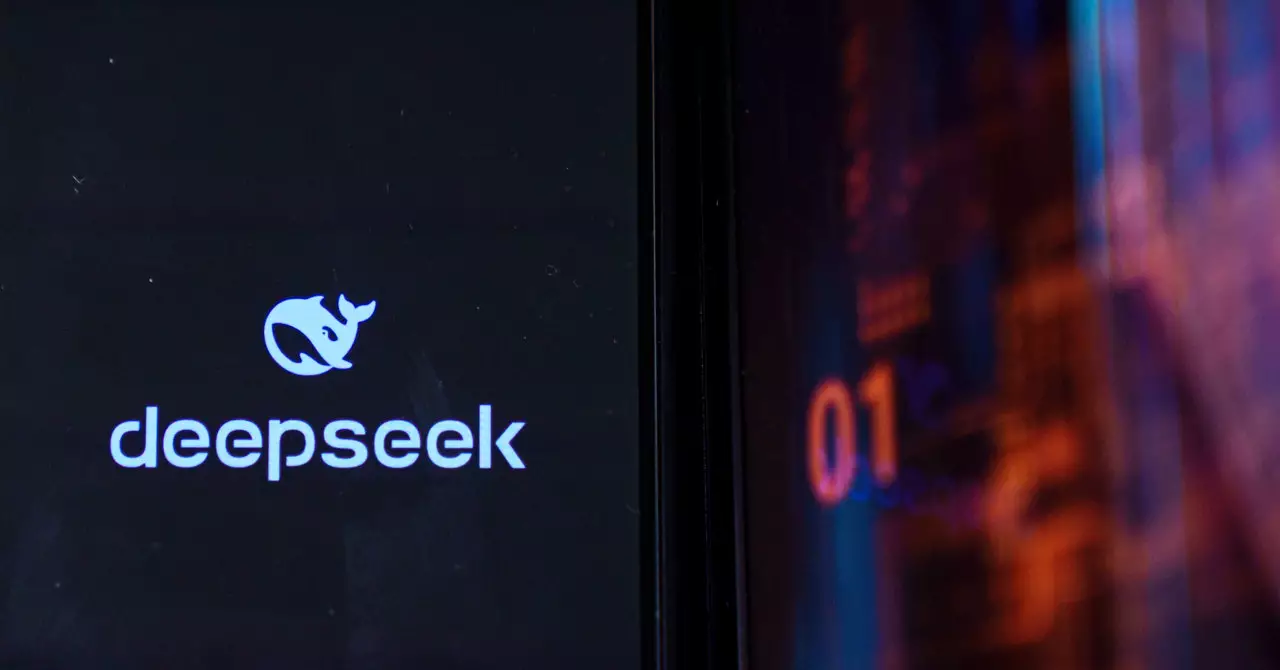The recent emergence of DeepSeek’s AI assistant, which surged to the top of Apple’s US App Store, has ignited significant conversations within the tech industry. This unexpected rise has not only highlighted the growing capabilities of AI developed outside of the West but also rattled major players in the tech market. With substantial shifts in stock valuations, a detailed exploration of DeepSeek’s R1 model and its implications on a global scale is warranted.
DeepSeek’s Surprising Emergence
DeepSeek, a startup based in China, has stunned analysts and investors with the launch of its open-source AI model, R1. Despite being a newcomer in the highly competitive AI landscape dominated by giants like OpenAI, DeepSeek quickly became the number one downloaded app in the US App Store. This rapid ascent was further underscored by a dramatic plummet in Nvidia’s stock value, which saw a staggering $460 billion evaporate from its market capitalization in a single day. Bloomberg labeled this event as potentially the most significant market loss in the history of the US stock exchanges, provoking reflections on the balance of power within the AI sector.
The trajectory of DeepSeek is particularly fascinating because the startup claims it achieved proficiency comparable to that of OpenAI by utilizing a fraction of the specialized computer chips usually required for producing sophisticated AI systems. This assertion challenges the prevailing notion that Western tech entities have an indisputable lead in AI technology, as pointed out by industry experts.
DeepSeek’s R1 assistant showcases distinct characteristics that set it apart from its competitors. It grants users immediate responses to inquiries, a feature demonstrated when the app promptly offered a variety of recipes featuring pomegranate seeds. This integration of conversational skills is particularly noteworthy, as it has drawn praise for its fluency and command of the Chinese language. Research scientist Cheng Lu of OpenAI remarked on the chatbot’s ability to convey the richness of the Chinese language, marking it as a significant advancement in AI conversational technology.
In addition to direct answer functionality, R1 includes a search feature retrieving relevant information from the internet. For instance, when queried about current news stories, the app provided references to events such as the Israel-Hamas ceasefire. However, some critics noted that its responses occasionally lacked contextual relevance, highlighting the need for further refinement in real-time search capabilities.
Furthermore, the introduction of “DeepThink” mode marks a notable advancement in AI reasoning. Unlike conventional AI responses, which merely provide information, DeepSeek’s model attempts to break down complex questions while elucidating its reasoning process. For example, when asked about major historical events of the 20th century, the model’s preliminary response included considerations of various thematic frameworks before launching into a discussion about notable occurrences. Nevertheless, the assistant’s abrupt discontinuation of its answer signifies ongoing challenges in fully developing consistent reasoning capabilities.
While DeepSeek’s AI assistant is currently offered for free, its accessibility raises questions about its sustainability as competition against established entities grows fierce. OpenAI, for example, utilizes a subscription model that provides exclusive access to enhanced functionalities. Given the financial implications of offering a free service, it remains to be seen how DeepSeek will balance user engagement with profitability.
Moreover, the operational environment in China poses additional limitations. DeepSeek, like other technology platforms based in China, is subject to stringent censorship imposed by the Chinese Communist Party, potentially affecting the neutrality of information provided by its AI. Concerns regarding the breadth of knowledge accessible through the chatbot prompt critical discussions about the implications of such censorship on AI learning capabilities and user experience.
DeepSeek’s rapid rise positions it as a valid challenger to established AI companies, promoting an urgent reevaluation of global AI leadership. As the industry landscape evolves, it becomes increasingly crucial for existing players to strategically reassess their offerings. DeepSeek’s ability to penetrate the market, particularly in how it manages technological development without heavy reliance on specialized resources, embodies a transformative moment in the AI arena—one poetically likened to “AI’s Sputnik moment” by venture capitalists.
As DeepSeek’s R1 continues to gain traction, it is imperative to monitor how this development may redefine competition and innovation within the realm of AI. The coming months will determine if this new player can maintain its momentum and how existing giants will respond to this challenge in a rapidly evolving technological landscape.

